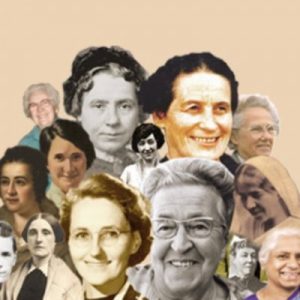Bertha, wife of Ethelbert, king of Kent
Bertha (Bercta), wife of Ethelbert, king of Kent. She was daughter of Caribert, king of Paris, by his wife Ingoberga (Greg. Turon. iv. 26, ix. 26), and lost her father in 575, her mother in 589. The date of her marriage is unknown, but it was probably after the death of her mother, although Bede speaks of the king receiving her “a parentibus.” Ethelbert was still a heathen, and on his marriage it was made a condition that his wife should be allowed to enjoy the exercise of her own religion, and should be attended by a bishop. Liudhard, or Letard, who is called by the Canterbury historians bp. of Senlis (Thorn, ed. Twysden, 1767), was chosen to accompany her, and the remains of the church of St. Martin, at Canterbury, were allotted for Christian worship (Bede, H. E. i. 26). It was partly, no doubt, by her influence that Ethelbert was induced to receive the Roman mission and to be baptized. Pope Gregory, in 601, when sending Mellitus to reinforce Augustine’s company, addressed a letter to Bertha, in which he compliments her highly on her faith and knowledge of letters, and urges her to make still greater efforts for the spread of Christianity. He also ascribes the conversion of the English mainly to her, and compares her to the empress Helena (St. Greg. Epp.xii. 29; Haddan and Stubbs, Councils, iii. 17, 18). The date of her death is unknown. She was buried in the porch of St. Martin, in the church of SS. Peter and Paul (Bede, H. E. ii. 5). Ethelbert seems to have married again after her death. She was the mother of Eadbald, who succeeded to the throne on Ethelbert’s death, and of Ethelburga, who, in 625, was married to Edwin, King of Northumbria. As her son was unbaptized in 616, it is probable that she found considerable difficulty in promoting Christianity in her own family, or else that she died whilst her children were very young. Elmham (ed. Hardwick, p. 110) says she took part in founding the monastery of St. Augustine, at Christmas, 604, but this is merely traditional; and the latest trustworthy trace of her is St. Gregory’s letter of 601.

Leave a Reply